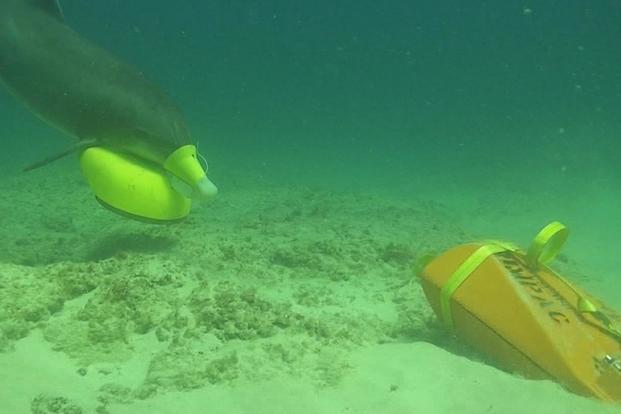Bottlenose dolphins joined the world's largest military maritime training exercise in search of mines buried at the bottom of the sea.
Eight dolphins spent 10 days hunting for simulated underwater mines off the coast of San Diego during the Rim of the Pacific exercise. The dolphins are part of the Navy's Marine Mammal Program, based in Southern California.
During one exercise, a dolphin detected a training mine within 30 seconds. The animals' biological sonar is the only capability that can find buried mines, said Ed Budzyna, a spokesman for Space and Naval Warfare Systems Center Pacific, which oversees the Navy Marine Mammal Program.
Once the dolphin found the mine, a Marine Mammal Program technician sent it back underwater to confirm its find, according to a Navy news release. When it did, the dolphin was given a marking device to carry down to the mine's location. Once that marker floated to the surface, a dive team swam underneath it to confirm.
The dolphin was right and was immediately rewarded with verbal praise and fish. The eight dolphins successfully located all of the mines during the exercise, Budzyna said.
The dolphins were integrated into RIMPAC's Combined Task Force 177 for this training event. The head of that task force is considered the mine-warfare commander during the massive international exercise, according to the Navy news release. The unit includes 1,100 personnel from the U.S., Australia, Canada, England, Japan, the Netherlands and New Zealand.
More than two dozen countries and 25,000 international troops are participating in RIMPAC in and around California and Hawaii. Personnel from the Royal New Zealand Navy, Japan Maritime Self-Defense Force, Royal Netherlands Navy and Royal Canadian Navy also observed the training, Budzyna said.
The Navy's Marine Mammal Program trains bottlenose dolphins and California sea lions to detect, locate, mark and recover objects in harbors, coastal areas and deep in the open sea. In the past, the division also tested sensory and physical capabilities of sharks, stingrays, sea turtles and marine birds.
-- Gina Harkins can be reached at gina.harkins@military.com. Follow her on Twitter at @ginaaharkins.












